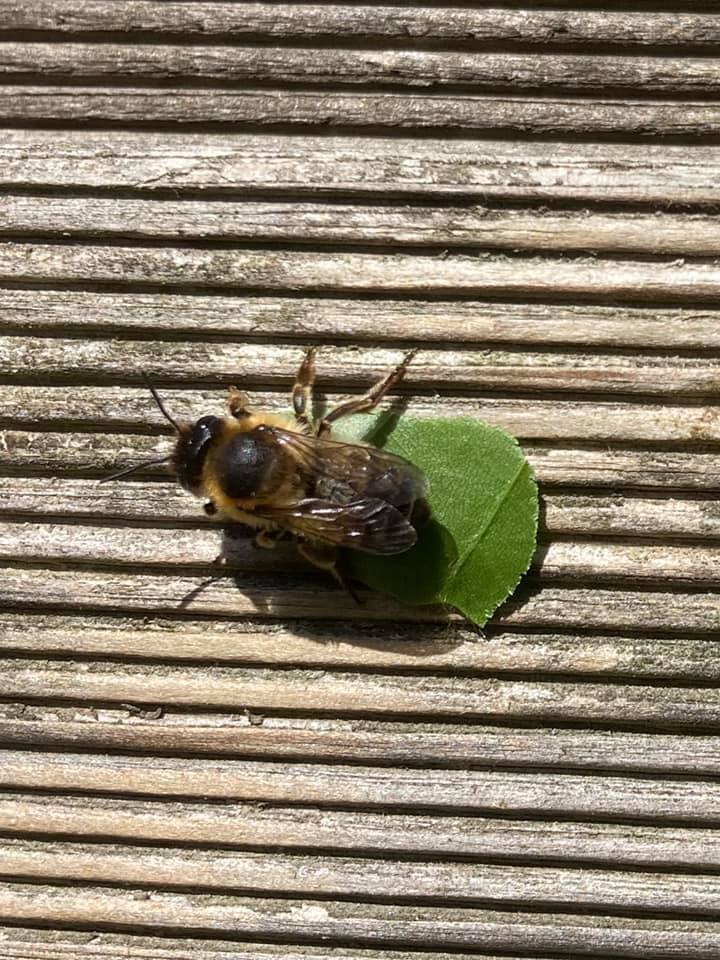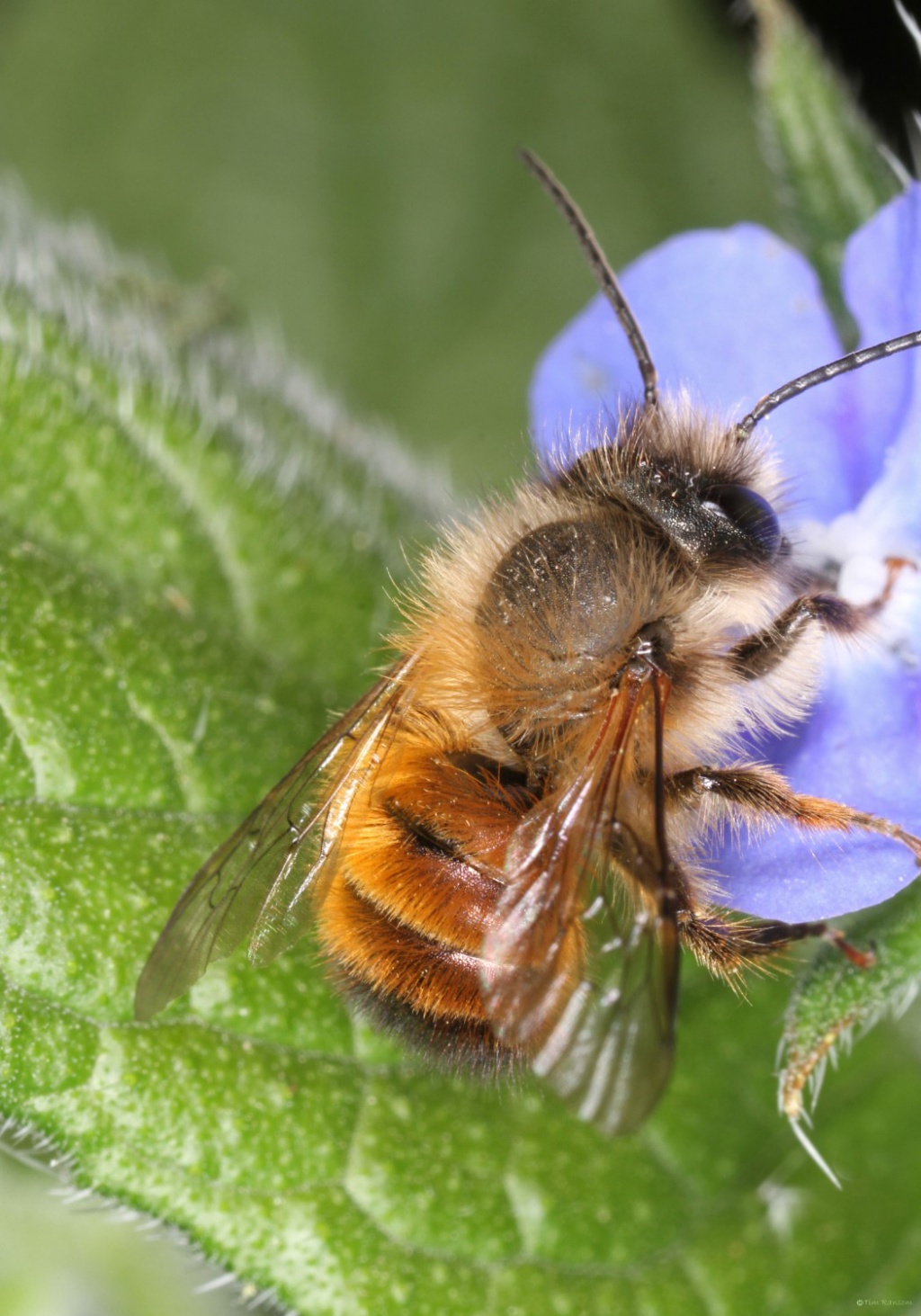Wild Bees
Wild Bees
When talking about bees there’s a species that comes to everyone’s mind, the honey bee. Not only is this only one species of the breadth of bees we have, it is also a farmed animal. Originating from Africa, honey bees are farmed all around the world. Yet we have huge diversity of wild bees that don’t get a mention when the ‘bee’ word is called. We’re going to introduce you to some of the wild bees you can spot in our island and hopefully get you out spotting them on a sunny day.
Firstly, what is a bee? A bee belongs to the taxon class Insecta, in this group we have bees, wasps, ants, dragonflies, beetles and bugs to name a few. Insects are animals that have 6 legs, they have segmented bodies and paired segmented legs. All insects have an exoskeleton, this hard outer body molts and changes as the animal grows. The order for bees is Hymenoptera, in this order we also have wasps and ants. Surprisingly looking at bee evolution they are commonly related to wasps. Around 120 million years ago bees evolved from predatory wasps and began their specialization towards feeding solely off the pollen from flowers - becoming vegetarians. Hunting wasps the kind that like to steal your ice cream are the closest living relatives to bees.
Identifying a bee from other insects takes some practice but there are some key features to look for. Body: Bee bodies, like all insects, are made up of a head, thorax an abdomen. Looking at their bodies most bees are hairy and it’s these hairs which help with pollen collection and pollination. Look at the hind legs; some collect pollen in tight pollen baskets whilst others are messier, collecting it over their abdomen hairs and legs. Eyes: Bees eyes have two compound eyes at the side of their heads. There are some other insects that look really similar to bees so check for the following: if the eyes join on the top of the insect’s head then it’s not a bee and mostly likely a hover fly. Bees also have three simple eyes on the top of their head called Ocelli which is essential for their navigation system. These Ocelli allow them to travel long distances, map their routes and return safely in the same day. Wings: They have four individual wings. The wings have laced with veins which create smaller cells and these can be a tool for species identification.
Bumblebees are a group of bees that are commonly thought of when talking about wild bees. These big bees are historically called humble-bees and they are a social bee; creating a colony with a Queen producing female workers. They are more commonly found in higher latitudes along the Northern Hemisphere and their hairy bodies are perfectly adapted to colder climates. In Jersey we have 6 species of bumblebee: Buff-tailed bumblebee, Common carder bee, Early bumblebee, Garden bumblebee, Red-tailed bumblebee and Tree Bumblebee. Many of the bumblebee species have small nests of up to 500 workers. Over the winter new Queens hibernate whilst the colony dies off. This is one reason why bumblebee numbers take a long time to recover from declines as their ecology means every year the colony starts a fresh.
Mining Bees as their name suggest mine into the soil. They require bare crumbly ground that is easy to dig into. Their holes can be found on the soil floor but also in roadside vergers where erosion has cleared vegetation exposing the soil. You can spot in Jersey the Tawny mining bee (Andrena fulva) which is a bright orange-red bee. Mining bees are solitary, the female works individually to collect pollen to provide for her egg which she’ll lay in the soil. If you spend time watching mining bees around their nest holes you can spot the females entering the active holes.
Mason Bee is a common name for bees in the genus Osmia and is called so because of their use of mud in their nests. They are the most common bee to find using bee hotels people buy for their gardens. They need cracks, cavities and tubes to use for nests and naturally would use hollow stems and holes in wood made from other insects such as beetles. In Jersey you can spot the red-mason bee which creates chambers within the tubes, laying a single egg in each before closing it off with the mason wall she makes. Come spring the new adult bees break through the walls and exit out into the world.
Leafcutter bees explain in their name what they do; they cut leaves! These leaves are used as a nesting material in the same hole types as the mason bees and you may find this bee using your bee hotels. This is a solitary bee species and a female will line the tubes with leaves. She is creating segments where in each one she collects pollen and lays and egg before closing up the nesting nursery and continuing down the tube. Each chamber is home to one egg and the female will continue until the tube is filled, closing off the end with a leaf. When the new adult bees are ready to emerge come spring they chew their way through the chambers and exit. In both mason and leafcutter bees the female bee will lay the males egg at the closest end to the exit. This is so when the males emerge first they hang around the tubes to wait for emerging females for mating. Although called solitary bees you may often see many individuals of the same species in the same area. It is thought this is a safety in numbers strategy of survival and although they live as neighbours they don’t help each other out.
There are still loads more bees we could talk about and if you would like to learn more I recommend: Field Guide to the Bees of Great Britain and Ireland (Bloomsbury Wildlife Guides) by Steven Falk (Author), Richard Lewington (Illustrator). Or if you want a bee novel then this book Buzz: The Nature and Necessity of Bees by Thor Hanson (Author) which is available at Jersey Library and is an amazing read on wild bees.
Leaf cutter bee: Fiona Gustafson
Red Mason Bee: Tim Ransom


